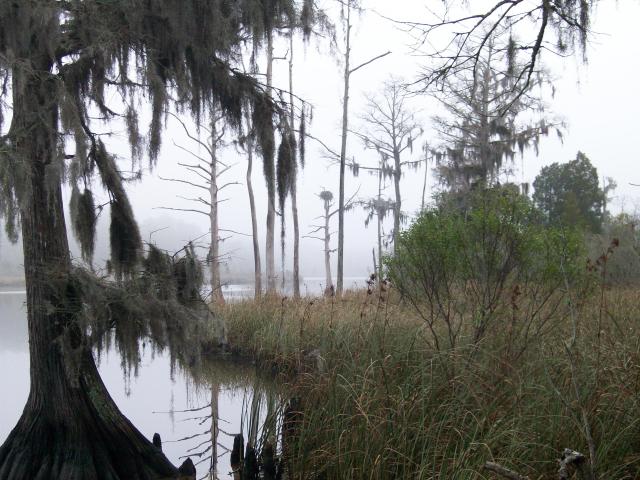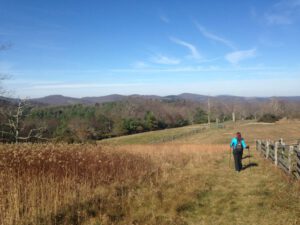
Here’s a quick look at these recently announced hikes. For more information and to sign up, visit our GetHiking! Charlotte, Triad or Triangle Meetup sites.
- Birkhead Mountain Wilderness, Uwharrie Mountains, Feb. 21. This hike will explore a part of the Birkheads we have yet to hike. Our hosts: The LandTrust for Central North Carolina and the Uwharrie Trailblazers hiking club.
- South Fork Rail-Trail, Lincolnton, March 28. Help inaugurate this new rail-to-trail conversion that adds a link to the Carolina Thread Trail.
- Low Water Bridge Preserve, along the Uwharrie River, May 9. A morning and an afternoon hike on this 1,300-acre preserve along the Uwharrie. Part of The LandTrust for Central North Carolina’s Naturalist Weekend.
- Uwharrie Trail, May 28-31. Yup, the entire 40-mile Uwharrie Trail, from NC 24/27 on the south to the Tot Hill Road trailhead to the north. This hike can either be done as a four-day backpack trip or, with access every 10 miles or so, as four day hikes. Brought to us, again, by The LandTrust for Central North Carolina.
- South Fork Trail, McAdenville, June 6. Celebrate National Trails Day on this stretch of the Carolina Thread Trail.
This week’s adventure: Hiking Goose Creek Despite being in the heat and humidity of September, one of the most popular from our fall series of adventures was our hike at Goose Creek State Park east of Washington. You liked it so much, in fact, that we’re doing it again, this Sunday. Sunday’s trip will reflect the other side of a coastal marsh: the wintry version in which gray, not green, is the dominant hue. Which isn’t to say this won’t be a stunning hike: views of site are better (less undergrowth) and the starkness of a coastal landscape can be quite alluring. We’ll again do about seven miles, starting on the Palmetto Boardwalk through marshes and swampland, Summer: Tar Kiln Trail then making a loop out of the Ivey Gut, Goose Creek, Live Oak, Huckleberry, Mallard Creek, and Tar Kiln trails. For more information on the hike and to sign up, visit our GetExploring! Greenville website.

More upcoming upcoming adventures: Here’s a quick rundown of recently scheduled upcoming adventures:
- Hiking Basics, Thursday, Feb. 19, 7 pm. In-store gear clinic.
- Bike and Brew, Saturday, Feb. 21, 2 p.m. 7-mile beginner’s route, 18-miler for more street-savvy riders.
- Orienteering Clinic, Sunday, Feb. 22, 2 p.m. Map and compass clinic at River Park North.
- Hike at Umstead State Park, Saturday, March 7, 11 a.m. Road trip to Raleigh to hike the 7.2-mile Sycamore Trail.
- Bike and Brew Featuring Duck Rabbit Brewery, Saturday, March 14, 2 p.m. 15-mile ride ending up at Duck Rabbit. Rides home provided.
GetHiking! North Carolina’s Classic Hikes

A reminder that the first hike in our monthly GetHiking! North Carolina’s Classic Hikes series is Feb. 21 at Doughton Park. A reminder, too, that even if you’ve signed up for the Doughton Park program in general, you still need to sign up for individual hikes. The Doughton Park includes both a short hike of 6 miles and a longer hike of 17. The Classic Hikes program is a fee program: each hike is $25 and includes a number of perks. The joining fee is $50, which covers your first two hikes. Sign up for the hikes that interest you, stay home and mow the lawn during the hikes that don’t. Learn more about the program here. Tip of the week: Packing — check and double check I’m paranoid when it comes to packing: forgetting your tent poles on two consecutive trips will do that. Here’s how I try to minimize the chances of forgetting a vital piece of equipment: Get all of my gear in a central location; place it on the left side of that central location. Get my packing list and affix to a clipboard. Starting from the top of the list, fetch the gear on my left, move it to my right, place an X next to the procured piece of equipment. Once I’ve gone through my list and have all my gear to my right, begin loading my pack. Every item I put in my pack gets another check. When I’m packed, everything should have two checks next to it. Inevitably, I will find something — batteries, TP, coffee — missing. I put a circle next to those items, then check them off once I’ve procured them. Note: Be sure to check everything! If you have a food bag, for instance, don’t assume it’s got power bars, oatmeal, coffee, whatever, in it: check for everything. Ditto your toiletries. Resource of the week: backcountry.com trip planning Here is a most handy guide from backcountry.com to planning your first backpack trip. It’s concise, using pictures and graphics to explain and simplify the process. Gear I Like: Heat I am not fond of being cold. When I’m moving, I rarely am. But for those long days on the trail — and especially for those nights in the woods backpacking — I will take all the help I can get. Layering typically does the job, but when that falls short, you can turn to an array of chemical pack warmers, from warmers that slip into your gloves or socks, to a large-scale warmer that will warm up your sleeping bag. There are two basic types of temporary warmers: air-activated and supersaturated solution. If you’re interested in how each works, read more here; otherwise, suffice it to say that you pop on open, a reaction occurs, you or specific parts of you stay warm for anywhere from four to 40 hours. Foot and hand warmers start around a couple bucks for a pair, you can get a body warmer for around $10. Inexpensive, they aren’t heavy, they don’t take up much room in your pack. A good thing to have.
